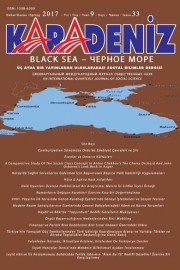XVIII. Yüzyılın İlk Yarısında Gence-Karabağ Eyaleti’nde Sanayi İşletmeleri ve Sosyal Tesisler
The Industrial and Social Facilities in Gence-Karabakh Region in the First Half of XVIII Century
Author(s): Iasha BekadzeSubject(s): Museology & Heritage Studies, Local History / Microhistory, 18th Century
Published by: Kültür Ajans Tanıtım ve Organizasyon
Keywords: Gence; Karabag; mill; ding; mumhane; dabaghane;
Summary/Abstract: In our article, after listing the archival documents about Gence-Karabakh region, we provided brief information about “the detailed state recordings of Gence-Karabakh region“ dated 1727. By using the state recordings, we examined the social facilities such as: water resources, water and ding mills1 and technical establishments like: mosque, mumhane, dye house, soapery, dabaghane copper shops of the first half of XVIII century. In the first half of XVIII century, the most advanced industry was milling. The province with abundant rivers had 1162 mills that was named as "âsiyâb" The annual income from this meals was 146.420 akche. In the province there was rice mills that was known as ding mills. The number of such mills was 219 and the tax taken from them totalled 74.290 akche. Gence, the centre of Gence-Karabakh province was situated on the silk road and at the most strategic points of the region. Genca, that means treasure was a bridge between Chine and Europe.
Journal: Karadeniz Uluslararası Bilimsel Dergi
- Issue Year: 2017
- Issue No: 33
- Page Range: 105-144
- Page Count: 40
- Language: Turkish

